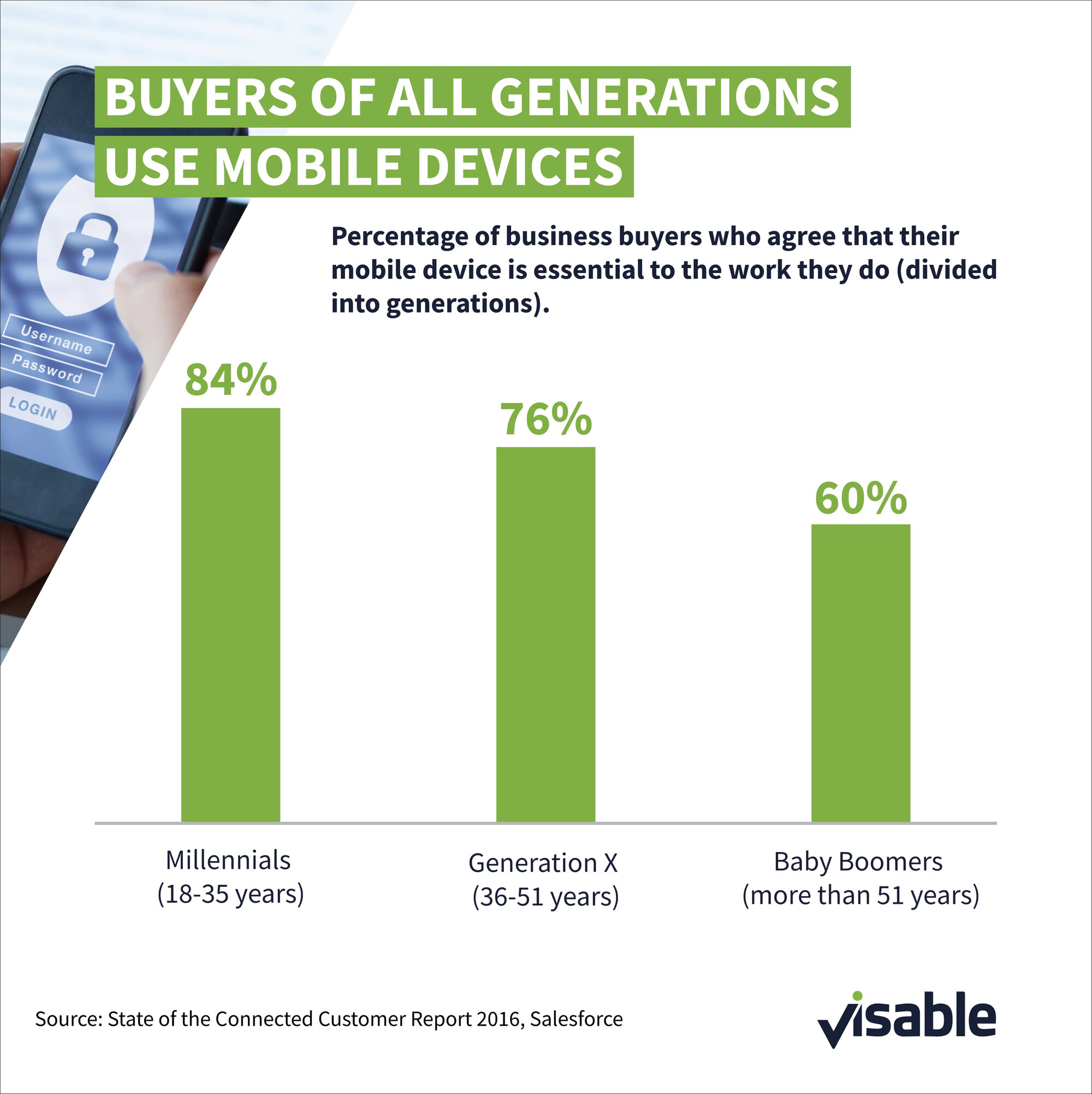The sales for mobile advertising are going through the roof. It comes as no surprise, though – after all, more and more applications are being used on smartphones and tablets, even in a business context. How to go about mobile-optimised marketing and save costs at the same time is explained here.

Sales with mobile online advertising are skyrocketing
Mobile first has long been a standard approach among advertisers – in Germany too. This can be seen in the sales that are being generated with mobile advertising. Back in 2015, these amounted to some 1.5 billion euros – and just seven years later in 2022, the German industry is recording sales of up to 6.8 billion euros. According to the forecast by PwC (German), the numbers in 2027 will nearly hit the 10-billion-euro mark. The absolute sales volume in the area of mobile advertising already passed that of stationary online advertising back in 2021.
To stand out from the competition, it is therefore becoming more and more important to make the most of your budget for mobile advertising – reaching as many of those in the target group as possible and avoiding high scatter loss.

Honing in on the user group thanks to mobile retargeting
Mobile advertising mostly entails classic banner ads that appear on smartphones and tablets. In such a case, less is sometimes more. People who are bombarded with lots of ads from a company are quickly bothered by these, making for a less-than-ideal user experience. The ads should therefore always be relevant and well timed.
These are particularly relevant when users have already shown interest in a product or service. This can be determined by mobile retargeting; in other words, by tracking the movements of a user on a website they’re visiting. Thanks to this tracking mechanism, marketers can find out, for instance, from which website the user came from, which pages are called up more frequently, how long the dwell time is on an individual page and when purchases are possibly made.
Ideally, the visitor calls up the previously visited page again and performs the action desired by the advertisers, such as making a purchase. An e-commerce retailer can, for instance, use mobile retargeting ads to remind Internet visitors about products that were viewed at one point but not purchased.
Compared to conventional advertising methods, mobile retargeting ads are an affordable solution for communicating with the target group, as no monetary resources are wasted on users who are not the targeted buyer.
This technology also works with the use of apps. With in-app marketing and retargeting, marketers can reactivate previous visitors in other apps – with the aim to get them interested again in a certain, personalised product offering in the own app.
Blacklists and whitelists
Another option for fine-tuning the targeting in mobile advertising is blacklists and whitelists, also known as blacklisting and whitelisting. Thanks to such lists, advertisers can define on which pages their advertising appears and on which it should not be shown.
Websites appearing on a blacklist will not feature the ads. This is helpful for when certain topics or certain contexts should not be associated with the product or service being advertised. Whitelists limit the appearance of ads even further: banners will only appear on websites listed. In this way, the target group is honed in even more precisely, which results in a lower scatter loss and therefore can save a lot of the company budget.
